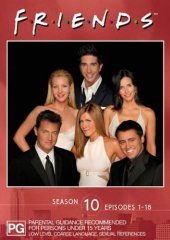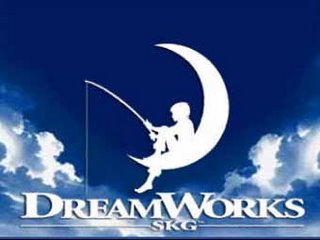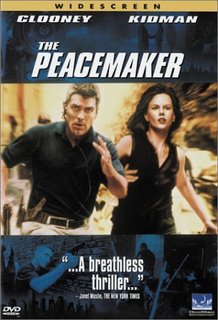Tuesday, December 26, 2006
Med 1 – MIGRAIN
· All the technical devices used to produce the text
· Meanings created by the images, sounds and words in the text
· Meanings created by the choice of technical devices used
· References to other media texts (intertexuality)
Institutions
· Identify the individuals who made the text
· Identify the organisations who funded the production
· The impact on the text of those individuals / organisations
· The impact of relevant Regulatory bodies on the text
Genre
· The category of media product to which the text belongs
· The relevance of sub-genres within the wider category
· Generic conventions used in the text
· Generic conventions not utilised in the text
· Original features
· References to other genre texts (intertexuality)
Representation
· Which social groups in society are portrayed
· Which social groups are not shown
· What regions, countries, continents are portrayed
· Are the representations positive or negative
· Does the text rely on stereotypes or do the representations achieve reality
· The possible effects of the various representations
Audience
· Who is the target audience
· How does the text identify its audience
· Is the text broadcast, narrowcast, published – possible effects
· Theories of audience consumption
· Theories of audience affect
Ideology & Values
· What view of society does the text reflect
· Whose view of society does the text reflect, why
· What moral position does the text demonstrate
· How has the text been affected by time & place when it was made
· What does the text tell us about power relations in society
Narrative
· The order in which meaning is created in a text
· How chronology is represented – linear / compressed / flash-back
· Narrative conventions used by the text
· Narrative theory – storytelling / characters
· Technical devices in the editing used to create meaning
Monday, December 18, 2006

15 minute plan for the omen
Media language
the tittle/masthead is written in black with connotes evil
as well as the slogan which is also written in bold which suggests a serious tone
the poster doesnt have much colour and has used most dull colours to emphesis the gloomy atomshphere and suggest the film is very pessmistic
Insitution
20 centuary fox-hollywood instution
Genre
horror- the 666 at the bottom suggests this as 666 connotes the devil which is related to the supernatural
Representation
the representation is of a child/boy who does not look very happy and has serious facial expressions suggesting the film is based on serious issues. furhtermore the dog beside it looks very agressive sugesting there may be aspects of violence invovled
Audience
the audience is aimed at are both females and males from the age range of 18 and up even though the film is suitable for 15 year olds. i think it is aimed at an older audience because they used words like "prophecy" which is easier for an older audience to understand
Ideolgy
Narrative
as it is a hollywood film i think todrov narrrative of equilbruim,disruption and resoulution is likely to be applied to the film
Monday, November 20, 2006
Similarities and differences between the theories and how relevant they are
Reception theory is similar to effects theory and uses and gratification as it believes the audience are both active and passive.
The reception theory is different as it uses qualitative and quantitive research.
The effects and uses and gratification theory are different because the effects theory believes the audiences are passive and are controlled by the media whereas the uses and gratification theory think the audience are active and consume the media texts to escape from everyday problems/daily routine, using the media for emotional interaction, learning behaviours and values and lastly gathering information.
I think the uses and gratification can be used for my main text which is Shrek 2 as it suggests the reason why the audience watch the film is for entertainment, escapism as it the sub genre is fantasy, moreover it is humorous because its subverts the convention of fairytales. On the other hand, the effects theory can also be applied as it is an American text American ideologies and values are likely to be pick upped. I think the reception theory can be applied as well as the children are likely to pick up the hegemonic reading, whereas an adult or a teenage may grasp a negotiated reading or a oppositional reading.
Monday, November 13, 2006
Hollyoaks (Monday Friday on c4 6.30pm/Monday-Friday on E4 7pm omnibus E4 Saturday 2pm C4 Sunday 10.30am)
News (on BBC1 everyday 6pm)
Watchdog (BBC 1 Tuesday on 7pm)
That’s so Raven (Disney channel 6pm)
The Simpsons (C4 Monday-Friday 6pm)
Hollyoaks is a soap that may be consumed by higher culture audience as well as it get played on E4 as well as channel 4 which portrays that it is aimed at two audiences.
The news on BBC1 gives the audience what they want because they make sure the news they report to us in accurate and they see it as a duty to inform/report to us to let us know what is going on.-so they are acting as a fourth estate.
Watchdog is a TV series that educates the audience and exposes corruptions therefore acting as safe guards.
The audiences have a variety of choices for prime time TV for example you could watch the News, Hollyoaks, That’s so Raven, Watchdog or The Simpsons as you have the choice of conforming (accepting),accommodating (being aware) or rejecting (ignoring) the texts.
Monday, November 06, 2006
Based on the accumulation of wealth so this means the rich will continue getting richer while the poor will continue becoming poorer.
Capitalism- aimed on a profit purpose, so workers are exploited.
Sell the labour but don’t own the production
The bourgeoisie (ruling class):
Wealthy bourgeoisie- employ the working class people and own the production however they don’t work themselves
Petty bourgeoisie- employ others but also work as well.
Marxism and the Media
They keep society as it is and keep the “status quo” therefore the working class the same and bourgeoisie the same. Examples of this is in adverts and newspapers. For instance in most adverts they have a male voiceover portraying that males have high authority compared to females and that they have more power and that you could trust them. This is reinforces patriarchy. Which could be said to be the dominant ideology.
The texts made are aimed at a mass audience so they “dumb down” the output. An example of this is the news. Instead of challenging the audience they dumb it down so that audiences are not educated so that they don’t question the bourgeoisie. Moreover, the news reinforces stereotypes which gives misrepresentations of groups of people.
Wednesday, October 18, 2006


The websites that i often use that are American are Google, Ask, Yahoo and Msn.
I do consume other text from my culture. As I watched quite a few bollywood films such as raaz,salaam namesta,kubhi khushi kubhi gham ect….
Overall i think the US do dominate the media as there are more texts that i watch which are american.
Monday, October 09, 2006
The initials "SKG" stand for the company's co-founders, Spielberg (film director and founder of Amblin Entertainment), Katzenberg (former head of The Walt Disney Company's film studios), and Geffen (founder of Geffen Records).in December 2005, the founders agreed to sell the studio to Viacom, the parent company of Paramount Pictures. The sale was completed in February 2006.

Five films with 20th Century Fox:
Eight films with Universal Studios: Small Soldiers, Gladiator, Meet the Parents, A Beautiful Mind, Seabiscuit, The Cat in the Hat, Meet the Fockers and Munich were made by DreamWorks and Universal and released in 1998 and between 2000-2005.
Five films with Warner Bros:
Five films with Columbia Pictures:
Currently, United International Pictures, a joint venture of Paramount and Universal, has the rights to release DreamWorks' films internationally.
1997
Amistad
Mousehunt
The Peacemaker
The Peking Order
1998
Antz
Deep Impact (with Paramount Pictures)
Paulie
The Prince of Egypt
Saving Private Ryan (with Paramount Pictures)
Small Soldiers (with Universal Studios)
1999
American Beauty
Forces of Nature
Galaxy Quest
The Haunting
In Dreams
The Love Letter
2000
Almost Famous (with Columbia Pictures)
Cast Away (with 20th Century Fox)
Chicken Run (with Aardman Animations)
The Contender
An Everlasting Piece (with Columbia Pictures)
Gladiator (with Universal Studios)
Joseph: King of Dreams (Direct to Video)
The Legend of Bagger Vance (with 20th Century Fox)
Meet the Parents (with Universal Studios)
The Road to El Dorado
Road Trip
Small Time Crooks
Walk the Talk (Direct to Video)
What Lies Beneath (with 20th Century Fox)
2001
A.I.: Artificial Intelligence (with Warner Bros.)
A Beautiful Mind (with Universal Studios)
The Curse of the Jade Scorpion
Evolution (with Columbia Pictures)
The Last Castle
The Mexican
Shrek
2002
Catch Me If You Can
Hollywood Ending
Minority Report (with 20th Century Fox)
The Ring
Road to Perdition (with 20th Century Fox)
Spirit: Stallion of the Cimarron
The Time Machine (with Warner Bros.)
The Tuxedo
2003
Anything Else
Biker Boyz
The Cat in the Hat (with Universal Studios)
Head of State
House of Sand and Fog
Old School
Paycheck (with Paramount Pictures)
Seabiscuit (with Spyglass Entertainment and Universal Studios)
Sinbad: Legend of the Seven Seas
2004
Anchorman: The Legend of Ron Burgundy
Collateral (with Paramount Pictures)
Envy (with Columbia Pictures)
Eurotrip
Lemony Snicket's A Series of Unfortunate Events (with Paramount Pictures and Nickelodeon Movies)
Meet the Fockers (with Universal Studios)
Shark Tale (distribution only)
Shrek 2 (distribution only)
The Stepford Wives (remake of 1975 film) (with Paramount Pictures)
Surviving Christmas
The Terminal
Win a Date with Tad Hamilton!
2005
Dreamer
The Island (with Warner Bros.)
Just like Heaven
Madagascar (distribution only)
Match Point
Memoirs of a Geisha (with Columbia Pictures and Spyglass Entertainment)
Munich (co-production with Universal Studios)
The Prize Winner of Defiance, Ohio
Red Eye
The Ring Two
Wallace & Gromit: The Curse of the Were-Rabbit (distribution only, co-production between DreamWorks Animation and Aardman Animations)
War of the Worlds (co-production with Paramount Pictures and Amblin Entertainment)
2006
Flushed Away (distribution only through Paramount Pictures)
Over the Hedge (distribution only through Paramount Pictures)
She's the Man
The Last Kiss (distribution only)
Flags of Our Fathers (with Warner Bros.)
In production
Killing Pablo (2006) (with Paramount Pictures)
Dreamgirls (2006) (with Paramount Pictures)
Splinter Cell: The Movie (2006)
Letters from Iwo Jima (2006) (with Warner Bros.)
Hammer Down (2006)
Silent Star (2006)
Trailer Park Boys: Baked on a True Story (2006)
Tropic Thunder (2006)
When Worlds Collide (2006) (with Paramount Pictures)
The Talisman (2007) (with Universal Studios)
Baywatch (2006)
The Heartbreak Kid (2006)
Tortoise Vs. Hare (2007)
Transformers (2007) (with Paramount Pictures)
Bee Movie (2007) (distribution only through Paramount Pictures)
Shrek the Third (2007) (distribution only through Paramount Pictures)
Announced
Fatal Frame (2007)
Crood Awakening (2008) (distribution only through Paramount Pictures)
Old School 2 (2007)
The Hands of Shang-Chi (2007)
The Ring Three (2007)
Disturbia (2007)
Madagascar 2 (2008) (distribution only through Paramount Pictures)
TV series
Champs (1996)
High Incident (1996)
Ink (1996)
Spin City (1996)
Invasion America (1998)
Toonsylvania (1998)
Freaks and Geeks (1999)
Band of Brothers (2001) (mini series)
The Job (2001)
Undeclared (2001)
Las Vegas (2003)
Oliver Beene (2003)
Father of the Pride (2004)
Taken (2002) (mini series)
The Contender (2005)
Into the West (2005) (mini series)
Miracle Workers (2006)
The Pacific War (2006) (mini series)
Dog Bites Man (2006)
Rescue Me (with the Cloudland Company, Apostle and Sony Pictures Television)
TV specials
The Secret World of "Antz" (1998)
When You Believe: Music From "The Prince of Egypt" (1998)
The Hatching of "Chicken Run" (2000)
Gladiator Games: The Roman Bloodsport (2000)
We Stand Alone Together (2001)
What Lies Beneath: Constructing the Perfect Thriller (2001)
Woody Allen: A Life in Film (2002)
Musical artists
Artists who were signed with DreamWorks Records include:
AFI (band)
Chris Rock
Propellerheads
Eels
Smash Mouth
Elliott Smith
Rufus Wainwright
Hem
Long Beach Dub Allstars
Floetry
Ash
Papa Roach
Jimmy Eat World
Nelly Furtado
Jimmy Fallon
Buckcherry
Blinker the Star
Morphine
Lifehouse
East Mountain South
Tuesday, October 03, 2006
Scene 11
The scene starts of in a desert and we see a blurry vision of Uma Thurman walking towards the camera/us, this is done to symbolise how hot the dessert is as she is walking really slowly. They use a number of dissolves as it is a slow edit so it helps emphasis how long it taking her to get to her destination. Parallel music is used to symbolise how slow the time is passing. The medium shot used is to show how tired, hot and dirty she is.

The women villain is then shown, the audience could interpret that she is the villain as she is wearing a black patch that could connote that she is like a pirate as pirates are evil and are only after treasure similar to her she is evil as she wants to kill Uma Thurman and is only after the Hanzo sword and the money. So the Hanzo sword can stand for a symbol of treasure, as they are both very precious in each case.

After the black mamba attacks Bill’s brother we see a point of view shot of Bill’s brother looking up at the women villain symbolising how he is weak and that she is in power.
Monday, September 25, 2006

Francis Ford Coppola
The level of contribution into the work he does is a lot as has produced, acted, written and directed many films. Some of the well-known films he has produced are Jeepers Creepers II (2003), Jeepers Creepers (2001) and Sleepy Hollow (1999).
The films he has directed are Jack (1996), The Godfather Trilogy (1992) and The Godfather: Part III (1990) some of the films he has written are The Godfather Trilogy (1992), The Godfather: Part III (1990) and The Godfather: Part II (1974).
Coppola often worked with family members on his films. He put his two sons into The Godfather as extras during the street fight scene and Don Corleone's funeral. His sister,Talia Shire, played Connie Corleone in all three Godfather films, the last of which his daughter Sofia also appeared in. His father Carmine co-wrote much of the music in The Godfather, The Godfather: Part II and Apocalypse Now.
He operated several movie theatres in the New York area, and he was responsible for bringing a number of silent Italian films to the United States. As an adult, Francis would remember hearing all kinds of stories about his Italian ancestors--tales of robberies and "honour" slayings and the kind of mayhem that might have fit perfectly into one of his Godfather movies.
Friday, September 22, 2006
the article i chosen to write about is "iPod under threat"
its about how Apple's iPod could soon become banned from the shelves if rival a company gets its way. music channel MTV are launching a digital download service today to compete with the techo giant's own iTunes.It's called Urge and is aimed at the growing number of people who use MP3 players other than the iPod.But MTV's got a huge challenge ahead: last month iTunes sold more than one billion tunes since launching three years ago.
my view on the article is ipod should not be banned as you could look at vidoes and pictures on the actaully ipod plus it could be used as a portable hardrive which is a bit simular to a mp3 player. however, i think mp3 players can be appealing as they are smaller then ipods.

















